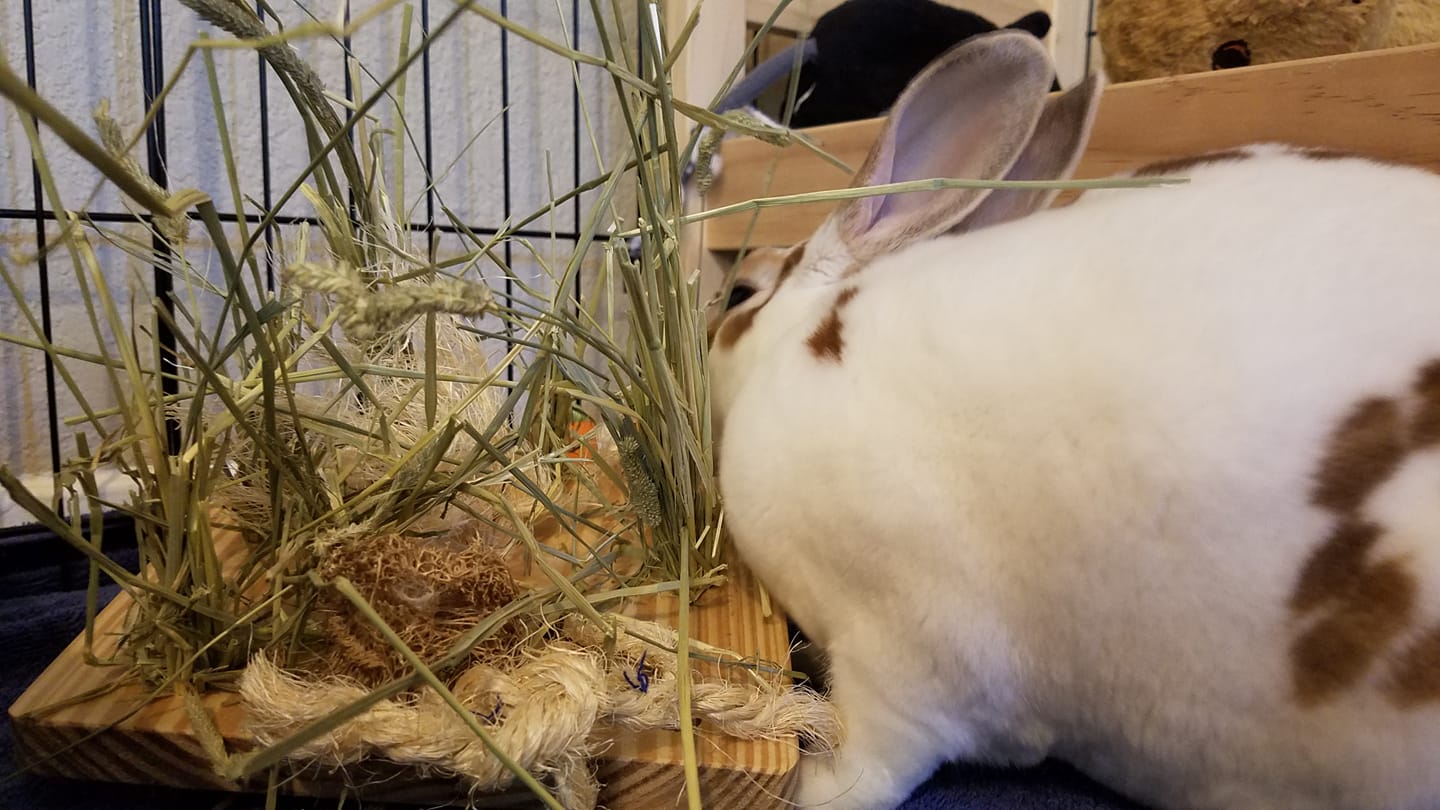Rabbit Help
Hay & Rabbit Allergies
The number one reason for adoption fails here at the rescue is hay and rabbit allergies. They bring bunny home, and suddenly they can’t stop sneezing, sniffling, and itching. Hay and Rabbit allergies are in the top 10 overall reasons for owner surrenders at our shelter. The thing is, swapping hay types could fix about 95% of these cases because it’s not usually the actual rabbit that people are allergic to. It’s the timothy hay!
We’re not blaming those who have given a rabbit up because they felt it was better for their health. That’s a personal choice, and it is the easiest way to stop the allergic reaction by just removing all possible triggers.
However, this can be an absolutely heartbreaking decision to many who depend on their rabbit companion and want to try all the options before surrendering their friend.
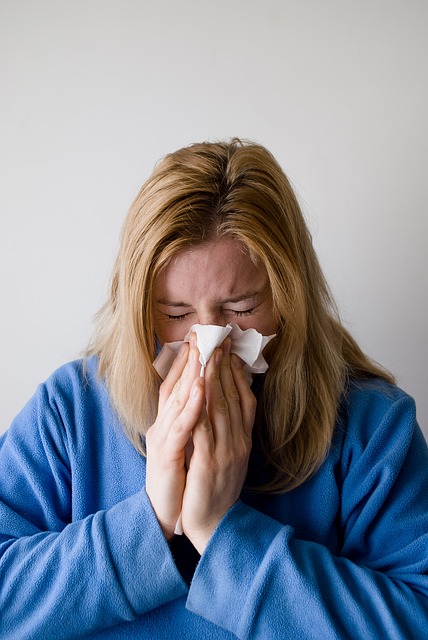
For those who want to try all the options before getting rid of their rabbit due to allergies, this page is for you. Below we discuss the different allergies associated with caring for a rabbit. We also provide solutions you can try that have worked for many people with similar problems.
Hay and Rabbit Allergies
Find what's Triggering The Allergy
The first step is to determine whether you’re truly allergic to your rabbit. Or is it something that comes with the rabbit, like timothy hay. Many doctors go straight to blaming the new animal when an allergy arises, and their allergy tests can overestimate a person’s sensitivities.
Before you rush your rabbit to the nearest shelter, we ask that you try and conduct some “elimination” experiments.
Video Credit: Lennon the Bunny on YouTube
Look at the Hay
Look at the hay you’re feeding your rabbit first, 90% of presumed rabbit allergies are actually allergies to the hay, and specifically the timothy hay.
If you’re feeding timothy hay to your rabbit, go ahead and take that out of your home. Give your home a good cleaning to remove all dust and tiny-hay fibers from your home before bringing in the new hay that you’re going to test. While timothy hay is a common allergy causer, orchard and oat hays are not. Switch your rabbit to either of these types of hay, and your rabbit still gets all the fibrous, tooth-filing, gut-moving benefits from either choice! And hopefully, you’ll notice a drastic change in your snuffly nose and watery eyes.
Look at the Litter/Bedding
Okay, so you tried switching hays without luck. There’s one more thing to look at–the bedding or litter you are using for your rabbit. While less common than the hay allergy, some people find they’re actually allergic to their rabbit’s bedding material.
Try switching to a pelleted recycled paper litter, like Fresh News as these types are low-dust. If you or your bunny doesn’t like pelleted litter, you can try something like Small Pet Selects Low-Dust Unbleached White Paper Bedding. They state that it’s 99% dust-free with no additives, no dyes, no irritants.
Please Note: HRRN does not and is not a sponsor of Small Pet Select. There are lots of companies out there where you can get your hay and litter. In our personal experience, SPS is a good, reputable pet care company that sells quality rabbit products, has an excellent bunny education blog, and works to help small animal rescues all over the US.
Last, but not least. Look at the Rabbit
Sadly, some people find that through this process of elimination, they are in fact, allergic to their rabbit.
So, what is it about your rabbit that’s triggering your allergies? And what are your options so you can keep your rabbit without being in constant allergy misery?
Often, when people have allergies to animals, they think it’s the animal’s fur causing the reaction. But usually, it’s the saliva proteins left behind after the animal cleans themself by licking their coat. So, not the actual fur itself. Touching their fur transfers these saliva proteins to our fingertips. Then, when we touch our face without washing our hands, it transfers to our nose and eyes. Lining these entrances to our bodies are immune cells ready to respond to any invaders.
For people who are allergic to rabbits, this is when their immune cells engage. Their body sees these foreign saliva proteins as a serious threat to the body that needs to be attacked.
Watery eyes and dripping nose try to wash away these proteins. The airway constricts in response to an influx of histamines, which in turn recruits more immune cells to the invasion site. This response is beneficial when the invader is the flu. Not so much when it’s to your rabbit or other animal.
For people like severe asthmatics whose allergic reactions can be life-threatening, we do recommend you find your rabbit a new home, for your safety. But for the majority of allergy sufferers, a few changes can allow for you to live with your rabbit and enjoy their company for years to come.
Disclaimer: The suggestions below do indeed require effort. But the reward is getting to keep your bunny. Weigh your priorities and see what matters most to you. Most people who’ve experienced the love of a rabbit, even for a short time, quickly decide that a few changes in their home and routine to make it work are totally worth it in the long run.
Minimize Direct Contact to Rabbit
Never touch your face after handling your rabbit or items like contact lenses. Always wash hands (and don’t forget eyeglasses!) after visiting your rabbit. Have someone else clean their cage with the bunny room’s door closed; if you must clean it, wear a mask and/or special clothes that you take off and put in the washer as soon as you’re done cleaning. Immediately remove soiled litter and hay from the house.
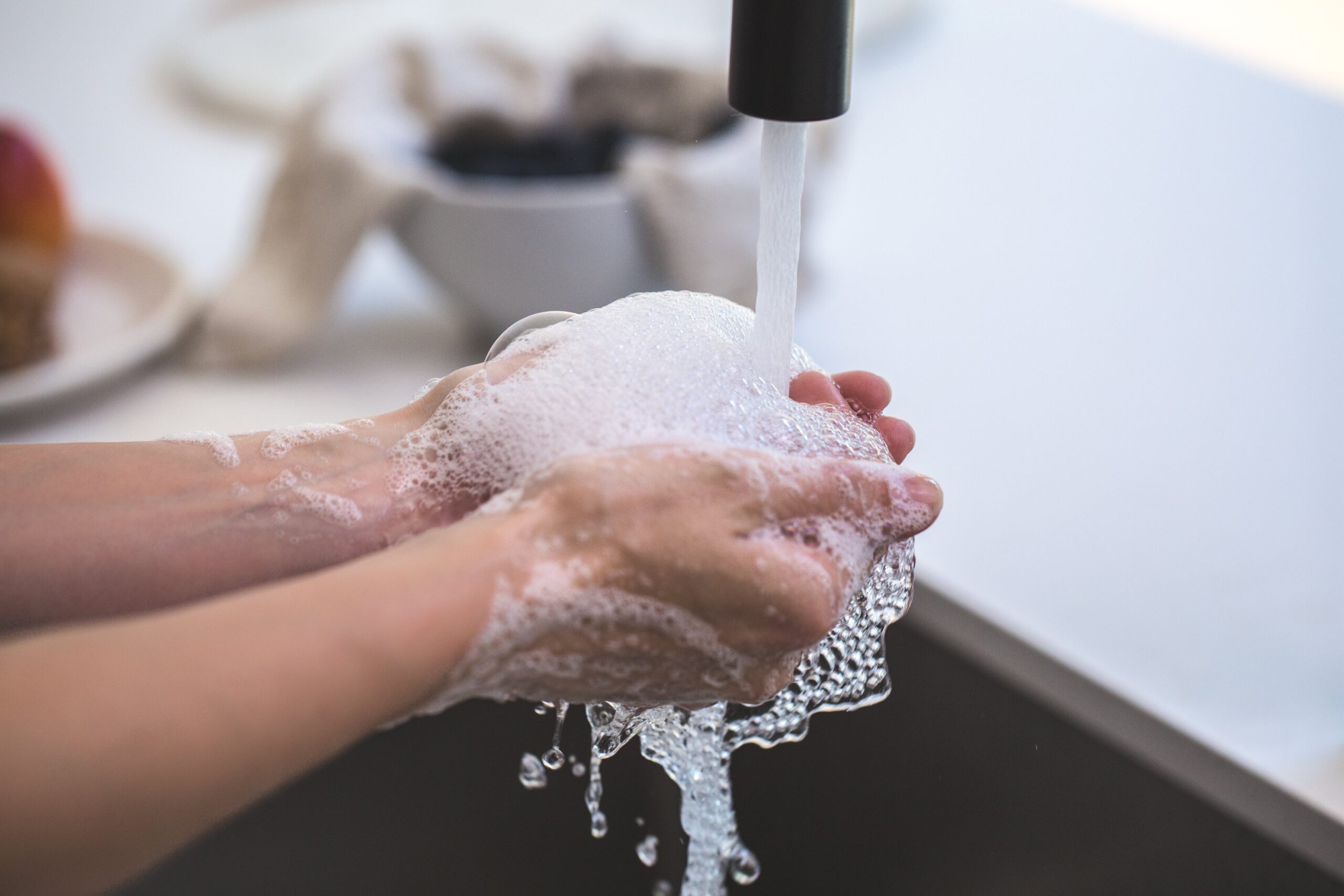
No Free Roam Rabbit
Keep your rabbit in a specific room or area with the use of x-pens and baby gates. This reduces the spread of rabbit allergens in the house. Doing this also makes cleaning easier.

Have Rabbit-Free Rooms
Set aside at least one room in the home where the rabbit never visits, a safe area where the immune system isn’t stimulated. Your bedroom should be one of these rooms because so much time is spent there.
Clean Frequently
Dust and vacuum often, not just furniture but door frames, window ledges, lamps, and curtains. Damp-mop wooden floors, especially under beds and furniture. Reduce clutter. Keep hay in a tub with a lid. This will help keep the flying allergy-inducing particles at bay.
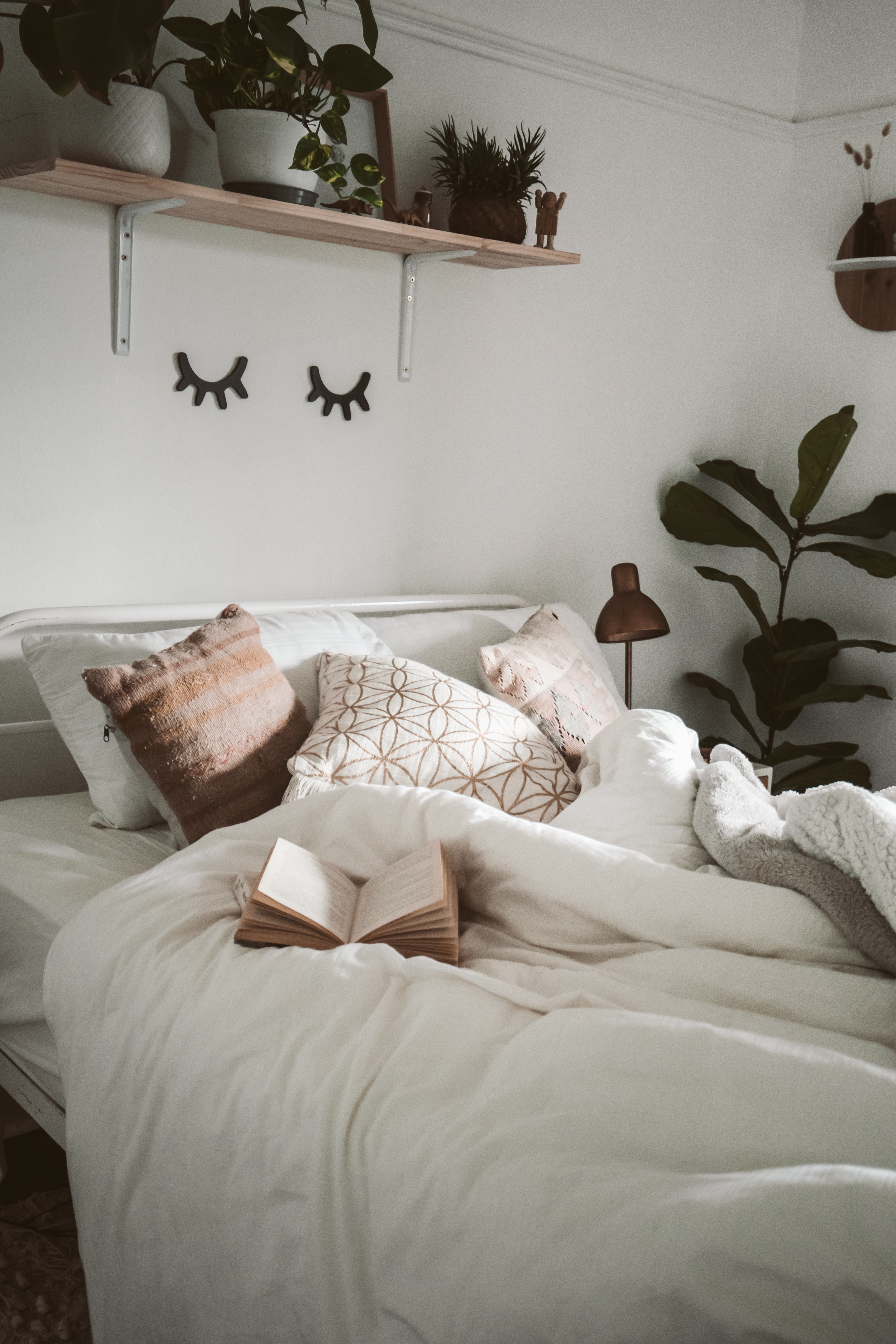
Use Over-the-Counter Allergy Meds
Most people with pet allergies respond well to a daily dose of over-the-counter allergy medications like Claritin. The benefit to taking an OTC allergy med daily is that if you suffer from any other allergies, this will help with those as well!
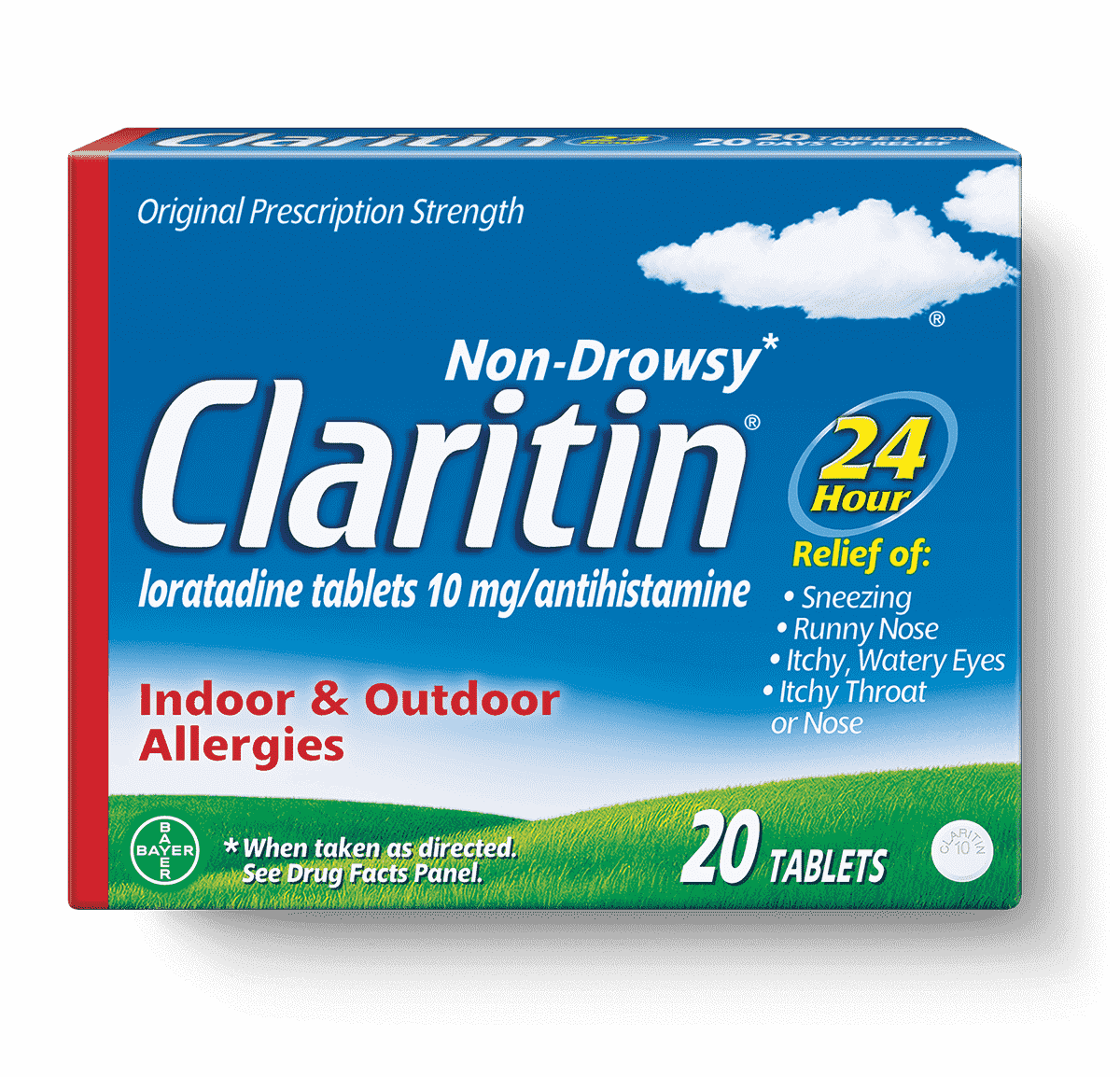
Invest in Air-Filtration System
The level of air filtration system you need depends on the severity of your allergies.
The best are HEPA (high-efficiency particulate air) filtration units, which pull microscopic dust, fur, and other particles from the air.

Although expensive, these filters are an excellent investment and improve the lives of many allergy sufferers. Run a HEPA filter full-time in your rabbit-free bedroom with the door closed.
If your allergies are on the more moderate side, using a house filter with a MERV rating between 4 to 12 will help capture smaller dust and mite particles flying around your home.
“Filters that have a rating between five and eight capture particles as small as 3.0 pm in size, which includes microbial growth, hair spray, and pudding mix.
Regular filters with a MERV rating between nine and twelve stop particles as small as 1.0 pm in size, which includes humidifier dust, legionella, and automobile emissions. These are the most efficient filters that you can use in your home. Filters with a MERV of 13 or higher are for commercial buildings, hospitals and clean rooms.”
Read more about filters here: Regular vs. Electrostatic Air Filters: How Effective Are They?
Frequently Asked Questions
About Allergies to Rabbits, their hay, and bedding.
Can't I just keep the rabbit outside if I'm having allergies to them inside?
Unfortunately, domestic “house” rabbits are not wild rabbits and therefore do not do well living outside.
To learn more about this particular subject, visit out page Why Outside is No Place for a Rabbit.
I switched from Timothy hay to Orchard Grass hay, but still having allergies, am I allergic to Orchard Grass as well?
Some people are also allergic to Orchard Grass as well, so try Oat grass hay as a last attempt. If you’re still having allergies, time to look at the bedding that your rabbit uses.

